Photo



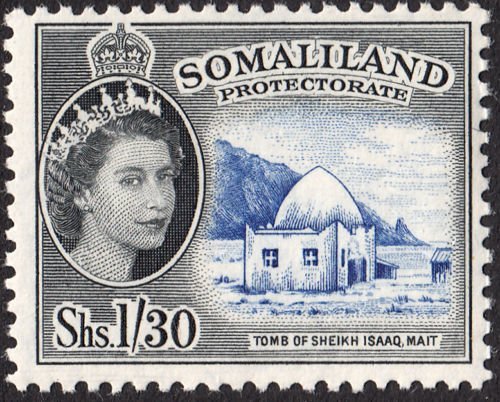





With one of the longest standing civil wars still ongoing, the internationally recognized government of Somalia does not have very much control of the nation, not least of all reflected in the self-proclaimed Republic of Somaliland in northwest Somalia. The modern Somalia was built from the colonial division of the land between the British (British Somaliland Protectorate, the region now claiming independence as the Republic of Somaliland) and the Italians (Italian Somaliland, originally and briefly called the Benadir Colony, then under UN trusteeship, administered by the Italians, for the 1950s), united in 1960 as the Somali Republic. The unification has not fared well since then, after a Leninist coup in 1969 and the devolving control of any central government leading up the start of the Somali civil war in 1991. In more recent years, there have been tentative forays into establishing some semblance of order and federal law, but the road to stability in Somalia remains arduous and not at all guaranteed. [Obviously a very minor point in the greater human rights struggle, but the government of Somalia hasn’t issued a legitimate postage stamp since 2002, though the Universal Postal Union has recently stepped in to aid in reestablishing postal communications within and internationally. Stay tuned....]
Stamp details: Top left: Issued on: November 1, 1903 From: Mogadishu, Italian Benadir Colony MC #1
Top middle: Issued in: 1904 From: Hargeisa, British Somaliland Protectorate MC #21
Top right: Issued on: October 15, 1928 From: Mogadishu, Italian Somaliland MC #118
Second row left: Issued on: September 1, 1958 From: Hargeisa, British Somaliland Protectorate MC #134
Second row right: Issued on: January 12, 1960 From: Mogadishu, Trust Territory of Somaliland MC #368
Third row left: Issued on: July 1, 1960 From: Mogadishu, Somali Republic MC #4
Third row right: Issued on: April 22, 1970 From: Mogadishu, Somali Democratic Republic MC #159
Fourth row: Issued on: July 2, 1991 From: Mogadishu, Interim Government of the Republic of Somalia MC #420
Stamp on bottom: Issued on: December 16, 2002 From: Mogadishu, Transitional National Government of the Republic of Somalia MC #BL95
Recognized as a sovereign state by the UN: Yes (since September 20, 1960) Official name: Federal Republic of Somalia; Jamhuuriyadda Federaalka Soomaaliya; جمهورية الصومال الفيدرالية Member of the Universal Postal Union: Yes (since April 1, 1959)
#Somali Republic#Somali Democratic Republic#Federal Republic of Somalia#Jamhuuriyadda Federaalka Soomaaliya#جمهورية الصومال الفيدرالية#Soomaaliya#Somalia#Horn of Africa#stamps#philately#August 24#Lenin#Paris Dakar Rally#الصومال
31 notes
·
View notes
Photo



As mentioned when we passed through Djibouti and Jubaland, Somalia’s history and current political standing are complicated situations far too tangled for a short introduction....and one of the complications is the self-declared Republic of Somaliland - recognized by no other national entity, claimed in its entirety by the Federal Republic of Somalia, but considered by itself as the successive state to the British Somaliland protectorate. Until something changes internationally, the Republic of Somaliland remains a member of the Unrepresented Nations and Peoples Organization.
Stamp details: Issued in: 1998 From: Hargeisa, Republic of Somaliland Colnect #1998-01 - 1998-03
Recognized as a sovereign state by the UN: No Claimed by: Federal Republic of Somalia Member of the Universal Postal Union: No
#somaliland#republic of somaliland#أرض الصومال#صوماليلاند#جمهورية أرض الصومال#Jamhuriyadda Somaliland#stamps#philately#aardvark#camel#african bat-eared fox#august 23
16 notes
·
View notes
Photo





The first European to sight and land in Solomon Islands (in 1568) was a Spanish explorer, Álvaro de Mendaña, who evidently rather thought he’d come upon Ophir, the Biblical city of riches of Solomonic fame, quite understandably calling the islands Islas Salomón. The British eventually wrested full control of much of the islands by 1893, though the Germans retained their power in the Northern Solomons (as part of German New Guinea) and a few of the islands ended up as part of Papua New Guinea. The principal island is Guadalcanal - a familiar name to anyone who ever learned much about WWII (and/or JFK). Solomon Islands gained independence from the British in 1978, and although English is the official language, only a tiny percentage of the population speaks English fluently, instead often communicating in an English creole, Pijin, or one of the 70-odd other languages spoken on the islands.
Stamp details: Stamp on top: Issued on: February 14, 1907 From: Honiara, British Solomon Islands Protectorate MC #1
Second row left: Issued on: April 7, 1975 From: Honiara, British Solomon Islands Protectorate MC #268
Second row right: Issued on: November 12, 1975 From: Honiara, The Solomon Islands MC #284
Third row: Issued on: July 7, 1978 From: Honiara, Solomon Islands MC #357
Stamps on bottom: Issued in: 2017 From: Honiara, Solomon Islands MC #4496-4505
Recognized as a sovereign state by the UN: Yes (since September 19, 1978) Official name: Solomon Islands Member of the Universal Postal Union: Yes (since May 4, 1984)
#British Solomon Islands Protectorate#British Solomon Islands#The Solomon Islands#Solomon Islands#stamps#philately#august 22#Guadalcanal
16 notes
·
View notes
Photo
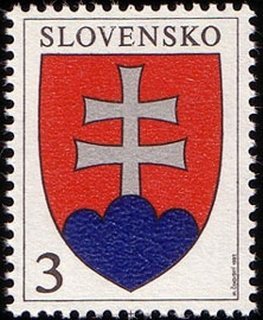

After the peaceful dissolution of Czechoslovakia, the Slovak Republic was created (along with the Czech Republic) on January 1, 1993. [There was a brief period during WWII when a Slovak Republic nominally existed - as a vassal state of Nazi Germany.] Despite some ups and down during Communist rule in post-WWII Czechoslovakia, the eventual end to Communism was relatively peaceful (known as the Velvet Revolution), culminating in the dissolution of Czechoslovakia (sometimes known as the Velvet Divorce). Fun fact: Slovakia has the highest per-capita automobile production in the world.
Stamp details: Stamp on top: Issued on: January 2, 1993 From: Bratislava, Slovak Republic MC #163
Stamp on bottom: Issued on: January 2, 2018 From: Bratislava, Slovak Republic MC #834
Recognized as a sovereign state by the UN: Yes (since January 19, 1993) Official name: Slovak Republic; Slovenská republika Member of the Universal Postal Union: Yes (since March 18, 1993)
#Slovenská republika#Slovak Republic#Slovensko#Slovakia#Československo#Česko-Slovensko#stamps#philately#August 21#velvet revolution#velvet divorce#nežná revolúcia#Rozdelenie Česko-Slovenska
3 notes
·
View notes
Photo


Another example of the toll it takes on a nation to be in the geographical and geopolitical cross-hairs of history, Slovenia only gained a partial independence with the creation of the State of Slovenes, Croats, and Serbs (and its subsequent practically innumerable iterations up to and including the Socialist Federal Republic of Yugoslavia) after the fall of all the giants at the end of the Great War. It was not until the USSR started breaking up that Slovenia at long last gained nominal *and* tangible independence and self-governance (and in fact was the first republic to secede from Yugoslavia). The terrain is largely forested alpine, but with the bonus of a small Adriatic coast. In other words: gorgeous.
Stamp details: Issued on: June 26, 1991 From: Ljubljana, Republic of Slovenia MC #1
Stamp on bottom: Issued on: May 27, 2016 From: Ljubljana, Republic of Slovenia MC #1209
Recognized as a sovereign state by the UN: Yes (since May 22, 1992) Official name: Republic of Slovenia; Republika Slovenija Member of the Universal Postal Union: Yes (since August 27, 1992)
#Republika Slovenija#Slovenija#Republic of Slovenia#Slovenia#Yugoslavia#stamps#philately#August 20#Država Slovencev Hrvatov in Srbov#State of Slovenes Croats and Serbs#Kraljevina Srbov Hrvatov in Slovencev#Kingdom of Serbs Croats and Slovenes#Kraljevina Jugoslavija#Kingdom of Yugoslavia
3 notes
·
View notes
Photo


Sint Maarten, like Aruba, Curaçao, and the Netherlands, is one of the constituent countries within the Kingdom of the Netherlands, having gained full country (Land) status in 2010. Prior to that, Sint Maarten was one of the island territories (Eilandgebied) within the Netherlands Antilles, and as you probably know, shares an island with French Saint-Martin, one of France’s West Indian overseas collectivities. The Sint Maarten Carnival looks to be a raucous affair that shouldn’t be missed...!
Stamp details: Stamp on top: Issued on: October 10, 2010 From: Philipsburg, Country of Sint Maarten MC #1
Stamps on bottom: Issued on: April 20, 2019 From: Philipsburg, Country of Sint Maarten Colnect #2019-02
Recognized as a sovereign state by the UN: No Claimed by: Kingdom of the Netherlands Member of the Universal Postal Union: Yes (Kingdom of the Netherlands joined in July 1, 1875)
#Land Sint Maarten#Sint Maarten#Netherlands#Nederland#stamps#philately#August 19#Carnaval#Sint Maarten Carnival#Carnival#Sint Maarten Carnaval#Eilandgebied Sint Maarten#Nederlandse Antillen#Netherlands Antilles#Dutch Antilles#saint-martin
6 notes
·
View notes
Photo

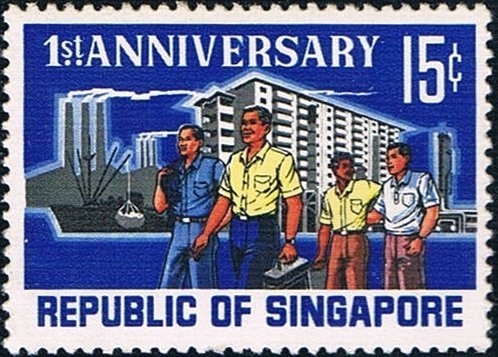

Singapore as a city-state was founded by Stamford Raffles in 1819 as a trading post for the British East India Company, having nominally been part of the Sultanate of Johor before that, and as such, under the control of the Dutch out of Malacca. Shortly after Raffles’ imperial initiative, the British officially took control of Singapore, creating the Straits Settlements colony (which also included much of modern day Malaysia), a geopolitical entity that existed until after WWII (during which conflict Singapore was occupied by the Japanese - a terrible time). In the post-WWII period, Singapore briefly joined Malaysia officially, in time to declare independence from Britain, and shortly after that declared independence from Malaysia also, establishing the Republic of Singapore in 1965. Singapore is considered an Asian Tiger economy and ranks high in most positive statistics - including tying with Japan for having the number one passport in the world (a Singaporean passport will get you visa-free or visa-upon-arrival access to 189 countries and territories worldwide). For fun, read (or watch) Crazy Rich Asians to get an idea about how the wealthy (old wealthy) Singaporean set lives.
Stamp details: Stamp on top: Issued on: September 1, 1948 From: Singapore, Crown Colony of Singapore MC #1
Middle stamp: Issued on: August 9, 1966 From: Singapore, Republic of Singapore MC #74
Stamp on bottom: Issued on: August 5, 2015 From: Singapore, Republic of Singapore MC #BL213
Recognized as a sovereign state by the UN: Yes (since September 21, 1965) Official name: Republic of Singapore; Republik Singapura; 新加坡共和国; சிங்கப்பூர் குடியரசு Member of the Universal Postal Union: Yes (since January 8, 1966)
#新加坡共和国#சிங்கப்பூர் குடிய���சு#Republik Singapura#Republic of Singapore#Crown Colony of Singapore#Malaya#Straits Settlements#stamps#philately#Stamford Raffles#crazy rich asians#august 18#Malaysia
5 notes
·
View notes
Photo


The Kingdom of Sikkim, long established in the Himalayas, was one of the last Princely States to join India - not until 1975 did Sikkim become an Indian state, having before that been a self-governing kingdom, a vassal state of the Gorkha Kingdom [Nepal], a British protectorate, and then an Indian protectorate. Sikkim is the world’s second-largest producer of cardamom - so taste the Himalayas next time you’re eating cardamom-infused foodstuffs.
Stamp details: Issued in: 1940 From: Gangtok, Sikkim State MC #N/A
Recognized as a sovereign state by the UN: No Claimed by: Republic of India Member of the Universal Postal Union: No
#འབྲས་ལྗ��ངས།#Sikkim#Sikkim State#Kingdom of Sikkim#India#indian princely states#stamps#philately#august 17#himalayan kingdom
9 notes
·
View notes
Photo






Like Liberia was for the United States of American freed slaves, Sierra Leone was established as a colony for freed British slaves (including many former slaves who had fought for the British during the American Revolution). The first colony, the Province of Freedom, was disastrous for most involved, but the second time around, with the establishment of Freetown by many Black Loyalists who had originally been settled in Nova Scotia, Sierra Leone as a viable colony was able to prosper, eventually gaining independence within the Commonwealth in 1961. Since then, there have been a number of conflicts and a lessening of democratic rule, although Salone’s rich mineral resources have helped maintain parts of the population in a wealthy lifestyle. As happens. [“Sierra Leone” is an adaptation and misspelling of the early Portuguese name for the area, Serra da Leoa, or Lioness Mountains.]
Stamp details: Top left: Issued in: 1859 From: Freetown, Sierra Leone Protectorate MC #1
Top middle: Issued on: October 10, 1933 From: Freetown, Colony of Sierra Leone MC #133
Top right: Issued on: June 2, 1953 From: Freetown, Sierra Leone Colony and Protectorate MC #175
Second row: Issued on: April 27, 1961 From: Freetown, Sierra Leone MC #193
Third row: Issued on: December 5, 1972 From: Freetown, Republic of Sierra Leone MC #546
Stamp on bottom: Issued on: June 27, 2019 From: Freetown, Republic of Sierra Leone Colnect #2019-264
Recognized as a sovereign state by the UN: Yes (since September 27, 1961) Official name: Republic of Sierra Leone Member of the Universal Postal Union: Yes (since January 29, 1962)
#Sierra Leone#Sierra Leone Protectorate#Colony of Sierra Leone#Sierra Leone Colony and Protectorate#Republic of Sierra Leone#stamps#philately#august 16#Salone#Province of Freedom#Sierra Leone Company#Serra da Leoa#Serra Leoa#queen victoria#QEII
5 notes
·
View notes
Photo

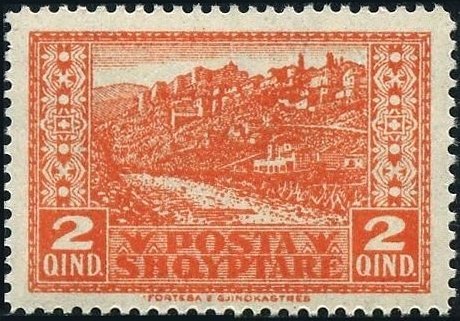
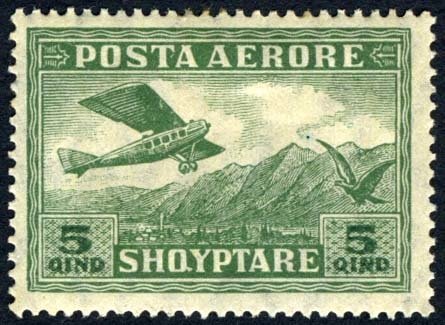

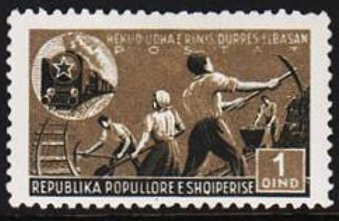
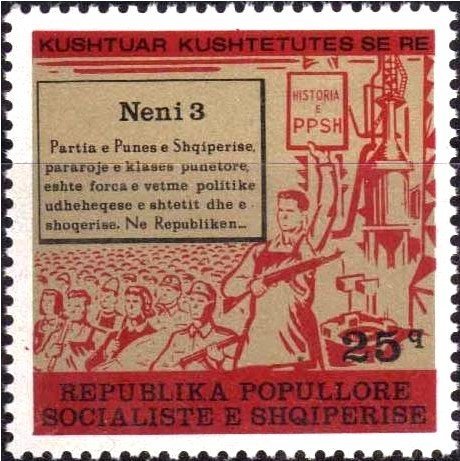
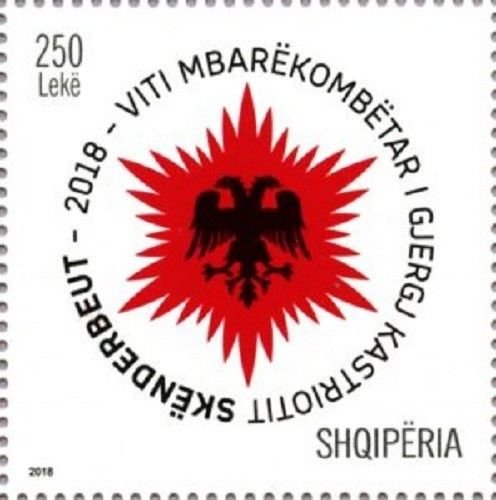
Situated as it is, smack-dab in the middle of central Europe, Albania has dealt with the attendant woes of most crossroads nations - changing hands, changing governance structure, changing names - before finally settling on being the Republic of Albania in the post-Soviet world. Not that that means there aren’t still governance issues, or a long simmering (sometimes boiling) conflict with neighboring nations, but for now...a republic it is, and this stamp enthusiast sure would like to visit one day.
Stamp details: Stamp on top: Issued on: December 1, 1913 From: Vlorë, Independent Albania MC #29
Second row left: Issued in: 1922 From: Durrës, Principality of Albania MC #83
Second row right: Issued on: May 30, 1926 From: Tirana, Albanian Republic MC #126
Third row left: Issued on: October 8, 1930 From: Tirana, Kingdom of Albania MC #228
Third row right: Issued on: May 16, 1947 From: Tirana, People’s Republic of Albania MC #418
Bottom left: Issued in: 1977 From: Tirana, People’s Socialist Republic of Albania MC #1925
Bottom right: Issued on: May 5, 2018 From: Tirana, Republic of Albania MC #3576
Recognized as a sovereign state by the UN: Yes (since December 14, 1955) Official name: Republic of Albania; Republika e Shqipërisë Member of the Universal Postal Union: Yes (since March 1, 1933)
#albania#Republika e Shqipërisë#Shqipëri#Shqipëria#Mbretëria Shqiptare#Kingdom of Albania#Republika Shqiptare#Albanian Republic#Principata e Shqipërisë#Shteti Shqiptar#Principality of Albania#Shqipëria e Pavarur#Independent Albania#Republika Popullore Socialiste e Shqipërisë#Republika Popullore e Shqipërisë#People's Socialist Republic of Albania#People's Republic of Albania#stamps#philately#august 15
5 notes
·
View notes
Photo




For a lot of its colonial history, Seychelles was lumped together (by the British) with Mauritius, at least in terms of governance (the French, though, were the first to lay claim - Captain Morphey named the largest of the islands after Viscount Jean Moreau de Séchelles, later anglicized as Seychelles [not the Seychelles, as you may have heard at some or most points in your life...]). Not until 1903 did Seychelles become a separate crown colony, and later gained independence as a republic within the Commonwealth in 1976. The African sovereign nation with the smallest population, but also the African sovereign nation with the highest nominal per capita GDP, Seychelles is a group of 115 islands, total land area of about 177 square miles, and much of the nation’s economy is tourist-based (including another of this stamp enthusiast’s enthusiasms - DIVING).
Stamp details: Top left: Issued on: April 5, 1890 From: Victoria, Colony of Seychelles MC #1
Top middle: Issued in: 1906 From: Victoria, Crown Colony of Seychelles MC #52
Top right: Issued on: June 29, 1976 From: Victoria, Republic of Seychelles MC #355
Stamp on bottom: Issued on: June 28, 2006 From: Victoria, Republic of Seychelles MC #896
Recognized as a sovereign state by the UN: Yes (since September 21, 1976) Official name: Republic of Seychelles; République des Seychelles; Repiblik Sesel Member of the Universal Postal Union: Yes (since October 7, 1977)
#Republic of Seychelles#République des Seychelles#Repiblik Sesel#Seychelles#stamps#philately#august 14#queen victoria
6 notes
·
View notes
Photo



And speaking of Senegambia (except not really)....The short-lived French colony of Senegambia and Niger (1902-1904) was reorganized as Upper Senegal and Niger (1904-1921) and then as the colonies of Upper Volta, French Sudan, and Niger (Burkina Faso, the Republic of Mali, and the Republic of the Niger, respectively), all of which came under the governance of French West Africa. [And just to be clear, Senegambia and Niger did not include what would later become either Senegal or The Gambia, and bears no geographical resemblance to the short-lived Senegambia Confederation unifying the two.]
Stamp details: Stamp on top: Issued in: 1903 From: Bamako, Colony of Senegambia and Niger MC #1
Bottom left: Issued in: 1906 From: Bamako, Colony of Upper Senegal and Niger MC #7
Bottom right: Issued in: 1914 From: Bamako, Colony of Upper Senegal and Niger MC #18
Recognized as a sovereign state by the UN: No Claimed by: Burkina Faso; Republic of Mali; Republic of the Niger Member of the Universal Postal Union: No
#Sénégambie et Niger#Senegambia and Niger#Haut Sénégal et Niger#Upper Senegal and Niger#Burkina Faso#Mali#Niger#West Africa#French West Africa#Afrique occidentale française#stamps#philately#august 13
6 notes
·
View notes
Photo

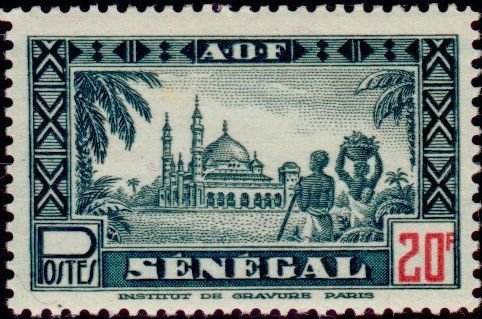


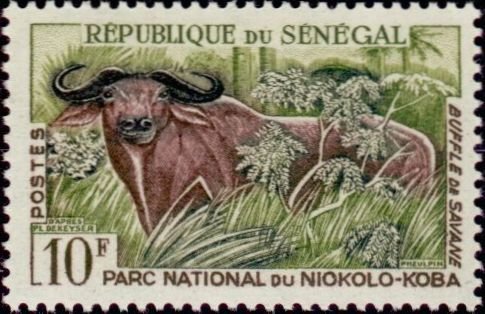


Like many regions of West Africa (and the colonized world generally), the area encompassed by the modern state of Senegal was historically many different kingdoms with many different influences and chronologies. In more recent history, this multiethnicity is demonstrated by the attempt to join with French Sudan (now Mali) at the time of independence from France (which union lasted roughly two months as the Mali Federation), and then later in the 1980s with a loose confederation with The Gambia, the Senegambia Confederation (which union only lasted roughly seven years). It seems possible that maintaining a cohesive union within Senegal’s borders is probably enough to keep everyone occupied...
Stamp details: Top left: Issued in: 1914 From: Dakar, French Senegal MC #53
Top right: Issued in: 1943 From: Dakar, French Senegal MC #221
Second row left: Issued in: 1944 From: Dakar, French West Africa MC #1
Second row right: Issued on: March 21, 1959 From: Dakar, French West Africa MC #103
Third row: Issued on: November 19, 1960 From: Dakar, Republic of Senegal MC #234
Bottom left: Issued on: November 15, 1982 From: Dakar, Senegambia Confederation MC #776
Bottom right: Issued in: 2017 From: Dakar, Republic of Senegal MC #2254
Recognized as a sovereign state by the UN: Yes (since September 28, 1960) Official name: Republic of Senegal; Réewum Senegaal; République du Sénégal Member of the Universal Postal Union: Yes (since June 14, 1961)
#Senegambia Confederation#Republic of Senegal#Réewum Senegaal#République du Sénégal#French West Africa#French Senegal#Afrique occidentale française#Confédération de Sénégambie#stamps#philately#august 12#Sénégal#Senegal#Mali Federation#Fédération du Mali
6 notes
·
View notes
Photo


As a reminder of the relatively recent advent of unification in Italy, the Principality of Seborga makes claim for independent sovereignty based (it warms this stamp enthusiast’s heart to note) on archives housed in the Vatican showing that Seborga was overlooked in the scramble following the Napoleonic Wars and subsequently reforgotten when the Kingdom of Italy was established in the mid-1860s, thus giving rise to the historical veracity of an independent principality. In 1963, a Seborgan by the name of Giorgio Carbone gained precedence in the town of Seborga with his claims for independence and he was duly named His Serene Highness Georgio I, Prince of Seborga, a position he held until his death in 2009. He was succeeded by Marcello I.
Stamp details: Stamp on top: Issued in: 1994 From: Seborga, Principality of Seborga MC #N/A
Stamps on bottom: Issued in: 2014 From: Seborga, Principality of Seborga MC #N/A
Recognized as a sovereign state by the UN: No Claimed by: Italian Republic Member of the Universal Postal Union: No
#Principality of Seborga#Seborga#Giorgio Carbone#Marcello Menegatto#Italy#Italia#Principato di Seborga#micronations#stamps#philately#august 11
6 notes
·
View notes
Photo

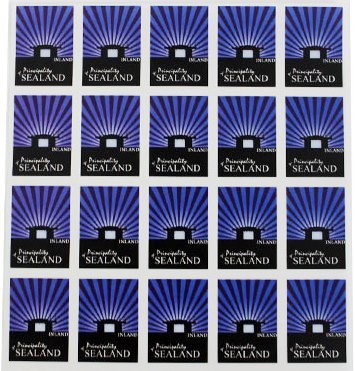
Out of all of the micronations on Earth, the Principality of Sealand might very well be the most well-known. Based on Rough Towers, an abandoned Maunsell sea fort off the northwest coast of England, Sealand was annexed by Paddy Bates and his family in 1967 (in fact, they wrested control of the tower from another family who had taken up residence - pirate radio broadcaster Jack Moore), eventually declaring independence from the United Kingdom and claiming de facto recognition as a nation-state by both the United Kingdom and Germany. [At the time of annexation, the territorial limits of a country’s waters was only 3 nautical miles - Sealand is a good 7.5 miles off the coast of Suffolk and thereby out of jurisdiction of the United Kingdom.] [In 1987, Britain extended its territorial waters to 12 nautical miles, bringing Sealand back into the fold. Under duress, it hardly needs be said.] Sealanders have been producing postage stamps and currency for decades - in addition to passports, aristocratic titles, and Sealandic swag. Buy some today!
Stamp details: Stamps on top: Issued in: 1969 From: Roughs Tower, Principality of Sealand MC #N/A
Stamp on bottom: Issued in: 2010 From: Roughs Tower, Principality of Sealand MC #N/A
Recognized as a sovereign state by the UN: No Claimed by: United Kingdom of Great Britain and Northern Ireland Member of the Universal Postal Union: No
#Principality of Sealand#Sealand#micronations#Roughs Tower#stamps#philately#cinderellas#august 10#maunsell sea fort#maunsell fort#Paddy Bates
7 notes
·
View notes
Photo





There are many Scottish Isles that have jumped on the philatelic bandwagon, most of them for purely financial reasons, and most of them sporting such inane subjects as dog breeds, cat breeds, Olympics, and the British Royal Family (none of which shouts ALBA to this stamp enthusiast....), but Sanda Island at least has an image of its famed Elephant Rock and the Summer Isles at least depict Scots mythology....so even though none of them is recognized philatelically, these few are, at least, Scottisher than most of them.
Stamp details: Stamp on top: Issued on: September 5, 1962 From: Sanda Island, Scotland Colnect #1962-1
Stamps on bottom: Issued on: August 6, 2009 From: Summer Isles, Scotland Colnect #2009-01 - 2009-04
Recognized as sovereign states by the UN: No Claimed by: United Kingdom of Great Britain and Northern Ireland Members of the Universal Postal Union: No
#sanda island#summer isles#scotland#Na h-Eileanan Samhraidh#Loch Broom#elephant rock#stamps#philately#cinderellas#august 9#Sandaigh
10 notes
·
View notes
Photo
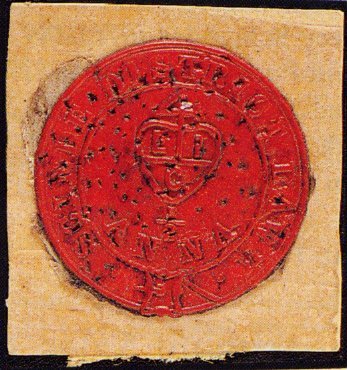
The Sindh Province of what was then British (East India Company) India has the distinction of having produced the first pre-paid postage stamps in the Indian Subcontinent - in this case, embossed paper or wax paper marked with the words “Scinde District Dawk,” “Scinde” being the early British spelling for Sindh, “Dawk” being the Hindi word for postage. I WANT ONE.
Stamp details: Issued on: July 1, 1952 From: Sindh, British Raj MC #N/A
Recognized as sovereign states by the UN: No Claimed by: Islamic Republic of Pakistan Member of the Universal Postal Union: No
#scinde district dawk#scinde#sindh#india#british raj#pakistan#postage stamps#philately#stamps#pre-paid postage#scinde dawk#august 8
6 notes
·
View notes